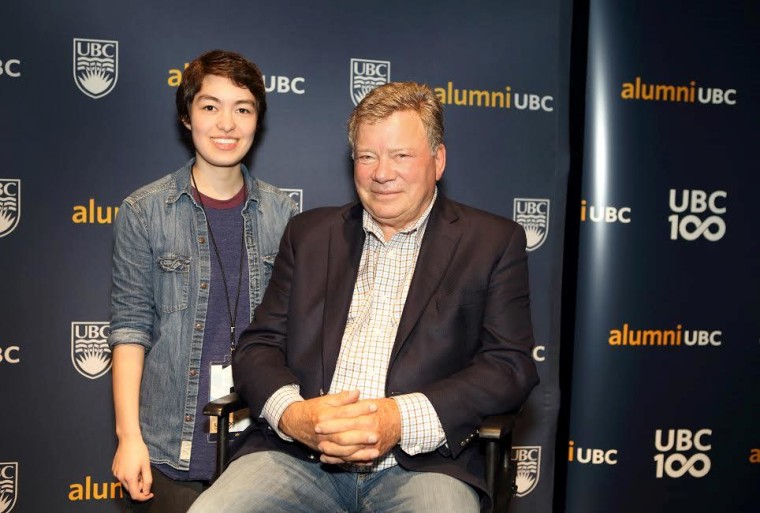Michelle Kunimoto was in the ninth grade when her father introduced her to the ever-popular "Star Trek." He was a "Trekkie" in every sense of the word, and she became one, too.
Now, at the age of 22 years old, Kunimoto has made a discovery that would make Captain James T. Kirk proud. During her undergraduate career at the University of British Columbia (UBC), Kunimoto unearthed four new exoplanets using data from NASA’s Kepler mission.
“I was looking at light curves, which are measurements of brightness over time,” she told NBC News. “What I was looking for was what’s called transit events. If an object passes in front of a light, it’ll block part of that object’s light. In this case it would be a planet passing in front of the star — it would block some of that star’s light. So you would see a decrease in brightness. If that happens periodically, then you could guess that’s a planet orbiting that star.”
RELATED: Seattle Sisters' Space Adventure Takes Them to the White House Science Fair
Kunimoto developed an interest for exoplanets when she took a course on the subject taught by UBC professor Jaymie Matthews. After finishing the course, she approached Matthews to work with him as a summer research assistant. He gave her the task of sifting through NASA’s data, which led to the discovery.
“I was looking for data they might have missed,” Kunimoto said. “And I expanded the search a little bit.”
Kunimoto looked at over 400 sets of data — but she says there are thousands more.
“The search is by no means over,” she said.

Out of the four planets she discovered, Kunimoto says she’s most excited about one that she and Matthews have dubbed “Warm Neptune.” The nickname comes from the fact that the planet’s atmosphere is between the freezing and boiling point of water, which makes the planet possibly habitable. The planet itself would be too big to sustain water, but Matthews explained the planet’s potential with an analogy to the movie “Avatar.”
“It’s in the Goldilocks zone — just right for a liquid water ocean,” Matthews told NBC News. “We don’t have an example of a planet like this. If it has moons, any of them would be in the habitable zone. Pandora in the movie 'Avatar' was a moon of a big planet, so we might have found a real-life version of Pandora.”
RELATED: Ellison Onizuka, First Asian-American Astronaut, Brought Hawaii to Space
Another exciting prospect of the planet is its rare orbiting habit. Despite its large size, it takes 637 days for the planet to orbit its sun, which is roughly a Mars-sized orbit. Of the nearly 5,000 planets and planet candidates found by the Kepler satellite, only 20 have longer orbital periods than this planet. Officially catalogued as KOI (Kepler object of interest) 408.05, “Warm Neptune” is located 3,200 light years away from Earth.
“No time soon are we going to be able to visit ‘Warm Neptune’,” Kunimoto said.

The past few weeks have been particularly hectic for Kunimoto, submitting her findings and graduating from UBC with a bachelor’s degree in physics and astronomy. But the young scientist was most excited to speak about her encounter with Captain Kirk himself.
“William Shatner came to UBC for an event run by alumni,” she said. “While he was on stage, in the question and answer period, he mentioned an article about a student who found four new planets. I was sitting in the audience and I didn’t know that was going to come out of his mouth.”
“As a Star Trek fan, to have Captain Kirk give a shout out to your research in front of a whole audience — is quite the moment,” Kunimoto continued.

However, her recent findings are just the beginning according to her professor.
“Based on her track record there may be more revelations from her soon,” Matthews said. “What she’s done so far is a launching pad to a number of research. If we were to have this conversation in 10 years, I don’t know what we’d be talking about – but I suspect we’ll be talking about Michelle and her accomplishments.”
The planets, designated as candidates until confirmed by NASA, have been submitted in a report to the Astronomical Journal. As for Michelle, she will be spending her summer at McGill University in Montreal, here she’ll be conducting research until she returns to Vancouver to begin her master’s degree in September.
Follow NBC Asian America on Facebook, Twitter, Instagram, and Tumblr.
